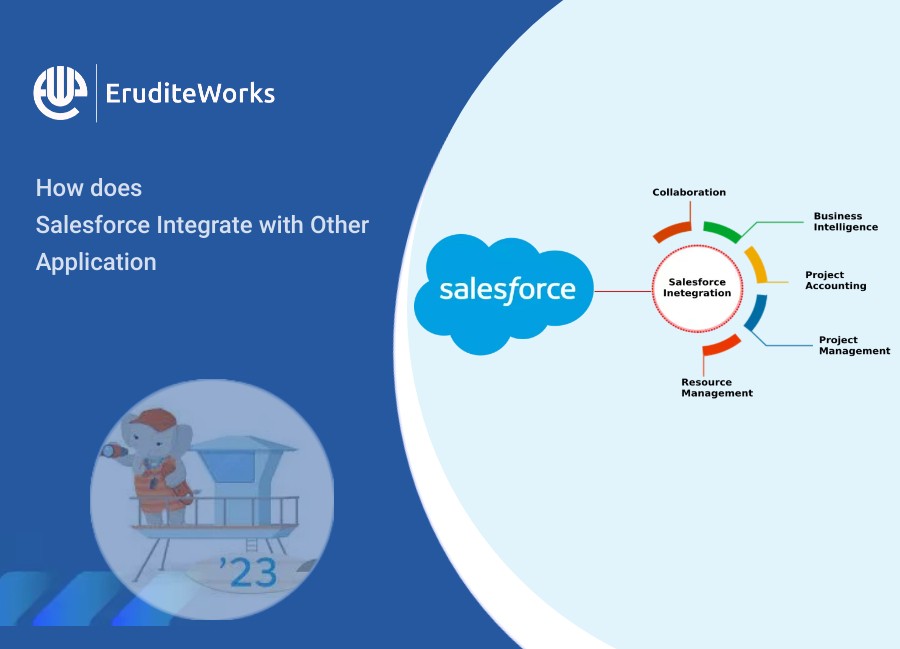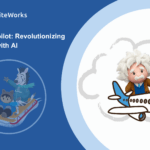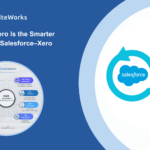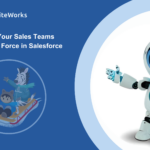In the vast digital landscape where businesses rely on multiple tools and platforms, the ability to integrate seamlessly is nothing short of magic. Enter Salesforce, the wizard of Customer Relationship Management (CRM), excels in managing customer data and successfully integrates with other applications.
Let’s unravel the simplicity and power behind how Salesforce effortlessly connects with various tools, ensuring your business operations flow like as synchronized orchestra.
Imagine Salesforce as the conductor, ensuring that every application in your business orchestra plays in perfect unison. And for a smoother experience, choose the right Salesforce integration partners to provide professional help.
In simple terms, integration is about making different software systems work together, allowing them to share and utilize data effortlessly.
Let us now understand Salesforce integration better.
The ABCs of Salesforce Integration
APIs: The Language of Integration
APIs, or Application Programming Interfaces, are like translators that allow various software applications to communicate with each other. Salesforce speaks this language fluently, enabling it to connect with multiple external systems.
Point-and-Click Magic
Salesforce offers a user-friendly, point-and-click interface for integration. There’s no need to be a coding wizard – it’s more like connecting the dots with a click. This user-friendly feature empowers businesses to integrate Salesforce with other applications without delving into complex code.
Middleware: The Middle Ground
For more complex integrations, middleware comes into play. Think of it as a mediator – tools like MuleSoft, Informatica, and Dell Boomi act as intermediaries, ensuring smooth data flow between Salesforce and different applications.
AppExchange: The App Supermarket
Salesforce’s AppExchange is like a supermarket where you can pick up pre-built integrations. With a vast choice of apps, you can find solutions that seamlessly gel with Salesforce, catering to your specific business needs.
Understanding Salesforce Integration in Action
Let’s dive into a real-world scenario to make things even more transparent. Imagine you’re using Salesforce to manage customer relationships and have a separate tool for sending marketing emails. Without integration, these tools work independently.
You have customer information in Salesforce and create marketing emails using other tools.
Now, let’s integrate them.
Salesforce becomes the central hub where customer data and email creation happen.
When a new lead is added to Salesforce, the integrated system automatically updates your email tool. The result? You can develop targeted email campaigns based on the latest customer data in Salesforce.
Now that we’ve grasped the basics let’s explore the real-life benefits of Salesforce integration.
Benefits of Salesforce Integration
There are various benefits of Salesforce integration, such as:
360-Degree Customer View
Imagine having a complete, panoramic view of your customer – their interactions, preferences, and history – all in one place. Salesforce integration ensures that data from different applications is synchronized, providing a comprehensive 360-degree view of your customers. This unified perspective is gold for enhancing customer interactions and relationship management.
Streamlined Operations
Integration eliminates data silos. It ensures your marketing, sales, finance, and customer support tools work together seamlessly. This results in streamlined operations, reducing redundancies and boosting efficiency. It’s like having a well-coordinated dance where every move complements the other.
Real-Time Insights
Integration enables real-time data exchange. It means you’re not just looking at historical data but making decisions based on the latest insights. It’s like driving while constantly looking through the windshield rather than the rearview mirror. Real-time insights enhance agility in your business strategies.
Enhanced Customer Experiences
When applications collaborate seamlessly, it reflects in customer experiences. From personalized marketing campaigns to efficient support processes, integrated systems contribute to an overall positive customer journey. It’s like a well-choreographed performance where every element works together to create a memorable experience.
Your Integration Journey
As businesses evolve, so does the need for cohesive systems. Salesforce integration is not just a technical solution; it’s a strategic imperative. It’s about creating a connected ecosystem where data flows effortlessly, processes are optimized, and your business thrives.
Ready to embark on your integration journey? Let’s simplify it further:
-
- Understand Your Needs: Identify the areas where integration can make a significant impact. Whether it’s connecting your CRM with marketing tools, financial systems, or support platforms, pinpoint the pain points.
- Explore AppExchange: Check Salesforce’s AppExchange for pre-built integrations. It’s like a menu where you can choose the apps that best suit your needs.
- Consider Middleware: For complex integrations, explore middleware solutions like MuleSoft or Dell Boomi. These tools act as facilitators, ensuring a smooth flow of data.
- Start Small, Scale Big: You don’t have to integrate everything at once. Start with the most critical areas and scale up gradually like building blocks – one step at a time.
- Train Your Team: Integration involves change, and change requires adaptation. Train your team on the new processes and tools. Think of it as preparing your superhero squad for new missions.
Conclusion
Through user-friendly interfaces, robust APIs, or middleware magic, Salesforce ensures that every note of data flows effortlessly, optimizing operations and orchestrating success for businesses.
This integration isn’t merely a technical feat; it’s a strategic necessity.
Connect, collaborate, and conquer with Salesforce integration!
Thank you for the read! It’s a wrap!
Also Read: Common challenges faced during Salesforce implementation and how a partner can help overcome them







Your blog got me to learn a lot, thanks for sharing nice article